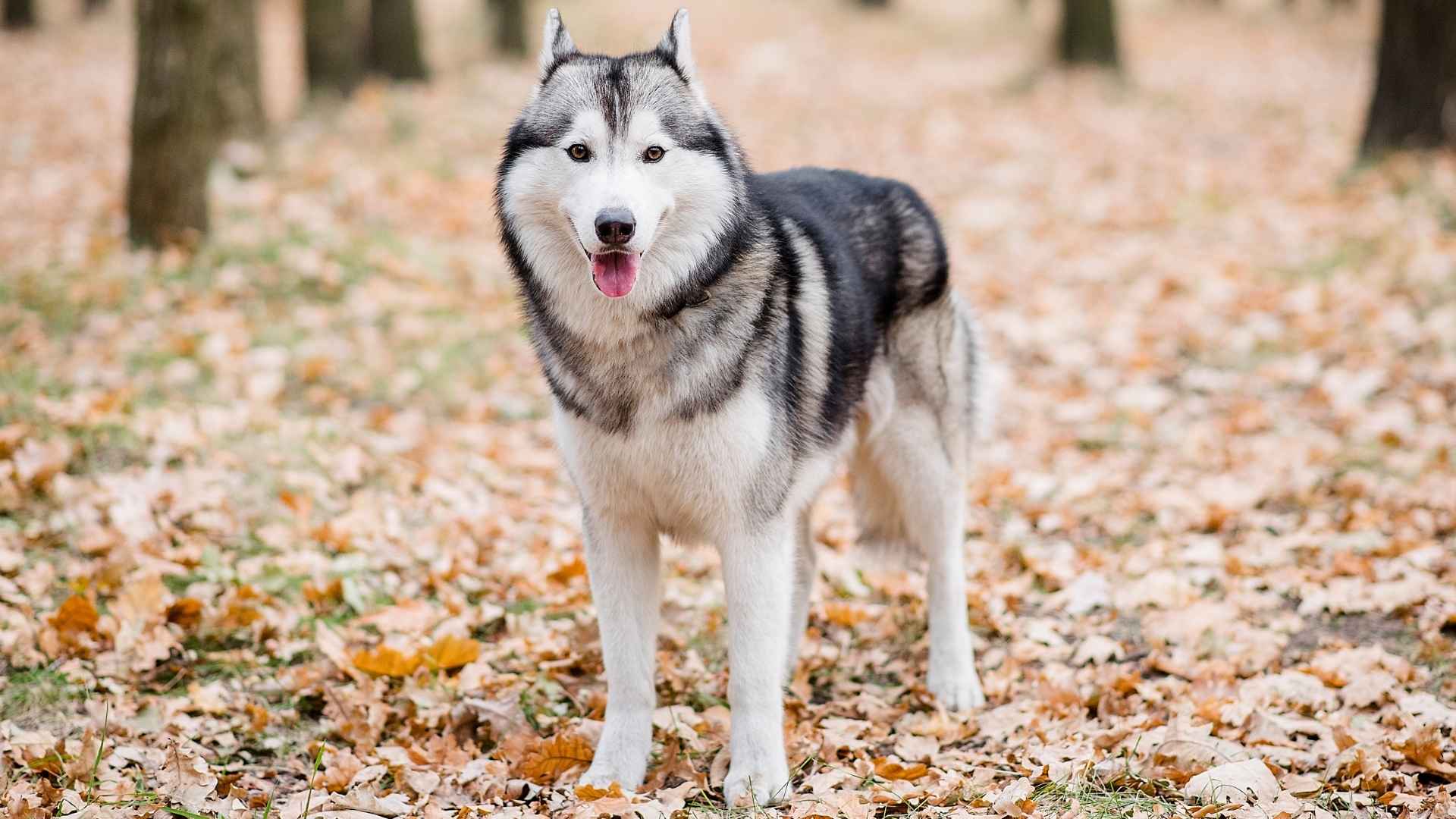In the canine kingdom, several dogs that look like coyotes have wild eyes, sharp features, and a hint of the untamed freedom in their spirit. The visual similarities are due to the ancestry with the Canis genus, but they have distant genetic origins.
There is something magical about the dog that has a coyote-like appearance. The wild dog evokes the raw beauty of nature in them. If you ever stared at a coyote and felt a deep pull in the chest from a quiet longing, then most likely any of these dog breeds will speak to your soul.
These dogs are wild at heart and loyal at home. For all those who are attracted to the wild beauty of nature, these fierce companions combine savage looks and loyalty. If you always wanted to like coyotes with some mystique or are simply fascinated by nature-inspired breeds, we will describe the aesthetic dog breed that echoes coyotes’ wild charm.
Dog Breeds that Look Like Coyotes
Coyotes (Canis latrans) are also regarded as Prairie Wolves, and they can be easily seen in North and Central America. Some animals resemble coyotes (foxes, jackals, and a few breeds of domestic dogs).
Meet the dog breeds that carry the untamed spirit and resilience of nature, together with loyalty. They are not just pets; they are the link to that wild world wrapped with affection.
1. Tamaskan
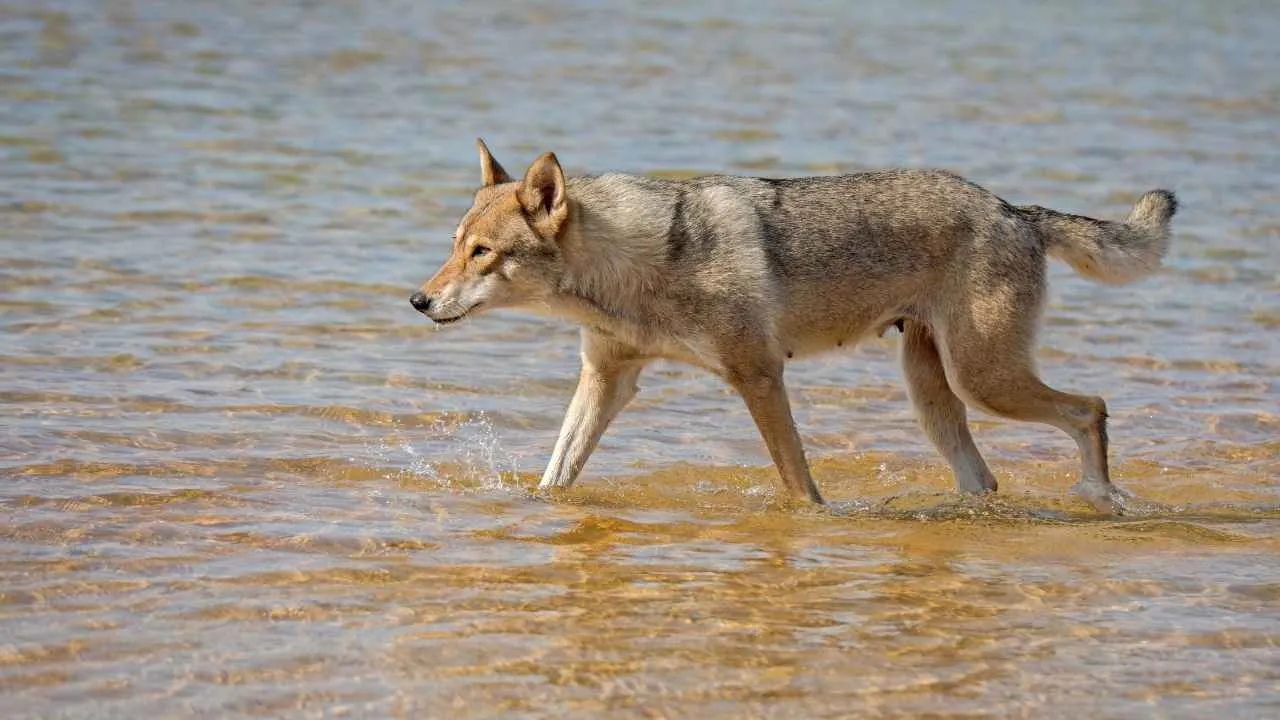
Tamaskan dogs are the rarest breed that resembles a wolf-dog. These domestic dogs excel in agility and obedience. The mixed-breed dog has an origin in Finland; it is a cross of Alaskan Husky, Alaskan Malamute, Canadian Eskimo Dog, Labrador Husky, and Siberian Husky.
These dogs that resemble coyotes are suitable for companionship, and due to their vigilance, they are trainable for multiple tasks and often regarded as working dogs. Tamaskan dogs are less aggressive, and they are intelligent, loyal, and more social.
These athletic dogs are tall and can grow up to 24-33 inches. These gentle giants wear a thick double coat, which includes red-gray, black-gray, and wolf-gray. They have a life span of 14 to 15 years. Moreover, they require almost two hours of training in order to stay healthy.
2. Czechoslovakian Wolfdog
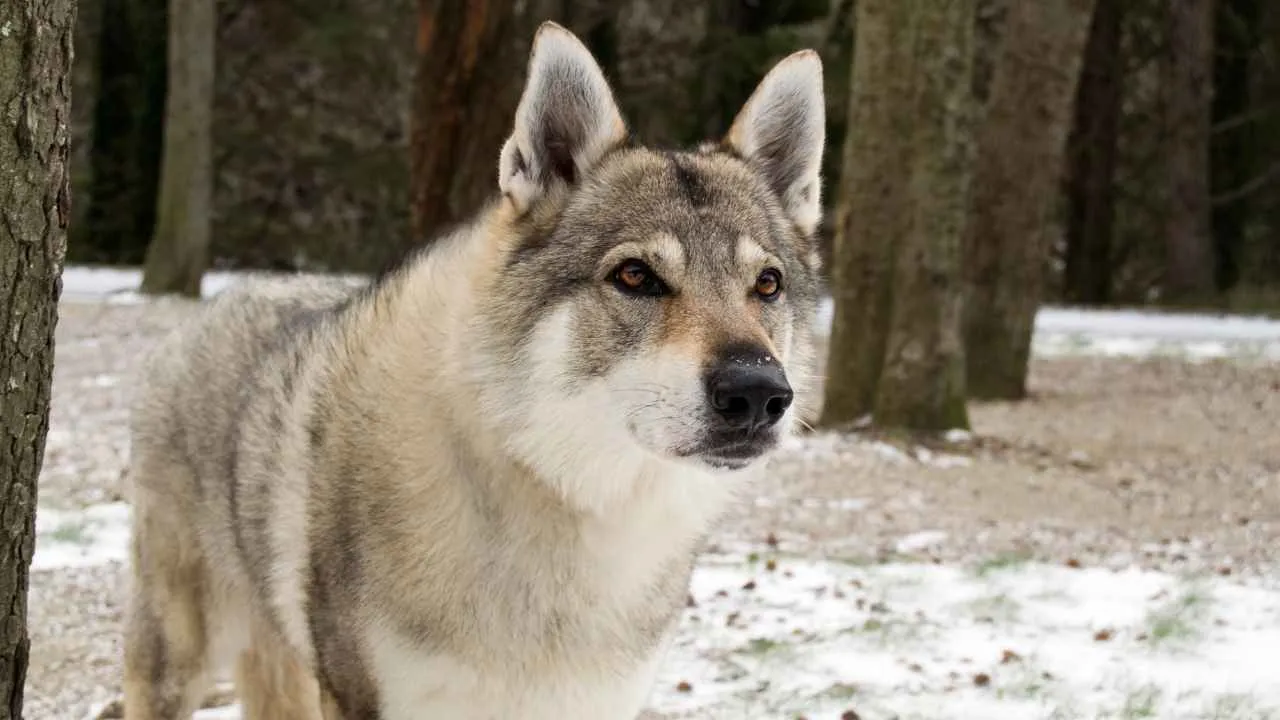
The Czechoslovakian Wolfdog is closely related to the German Shepherd and the grey wolf due to its ancestry. This wolfdog breed of dog originated in Czechoslovakia around 1955. It is a working dog with high energy levels.
They have a good temperament, packed with high energy and stamina. Czechoslovakians are an intelligent breed and love to socialize. Unlike coyotes, they are trained to rescue and track, and are also used for hunting or to guard sheep.
Czechoslovakian Wolfdogs typically weigh about 57 to 66 pounds. It develops a strong social relationship with family and other breeds. It has erect ears, and the thick coat is silver-gray to yellow-gray, which is straight and close.
The American Kennel Club (AKC) has stated that it is the primitive breed of dog that has an independent personality and dominant nature.
3. Saarloos Wolfdog
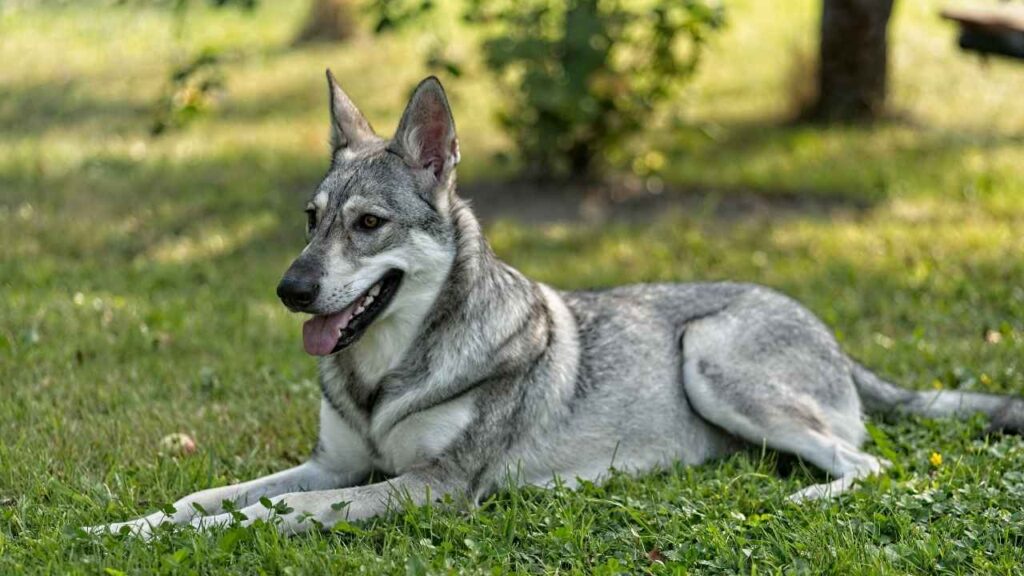
The Saarloos Wolfdog has its origin in the Netherlands. In 1935, an experiment was conducted to get a better working dog with the cross of different breeds of Eurasian gray wolf and German shepherd. In this way, they achieve a unique look.
The strong-built breed of Saarloos Wolfdog resembles a wolf-dog and has an independent nature. It weighs 100 pounds, has a muscular body, and has a bushy tail. It has a dense coat similar to the wolf, they have a muscular build and long legs.
The large breed is independent in nature, like a wolf, and affectionate with humans. They are extremely powerful and require much care. Saarloos Wolfdogs are great pets for those who have experience with handling a dog.
4. Utonagan Dog
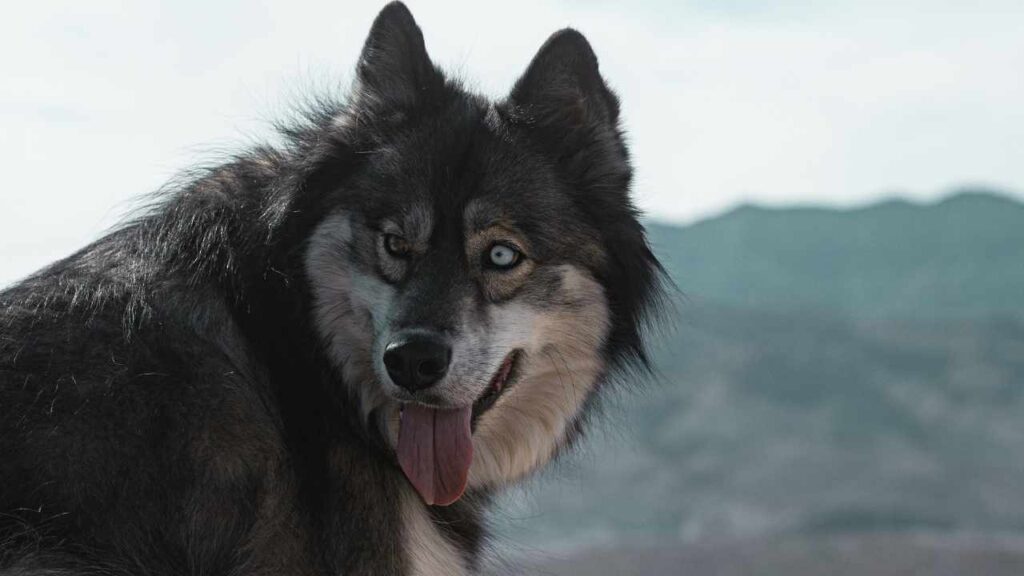
The Utonagan Dog is a muscular dog and has a similar appearance to the wolf. They are renowned for their even temper and friendly nature. The affectionate dog creates a strong bond with the family and even with other members.
It is a really good addition to domestic life as it is less aggressive. They are named Utonagan dog, which means “Spirit of the Wolf.”
They like to do outdoor activities. They show affection and comfort to the children and sometimes to other dogs. This super friendly dog weighs around 55 to 100 pounds and can live to 12 to 15 years.
5. Siberian Husky
Siberian Huskies have a thickly furred body that has a double coat and a bushy tail. According to the Kennel Club, Siberian huskies have almond-shaped eyes that have various colors: black, brown, or blue.
Most often, it is known as a husky, as it is a very popular dog breed. The interesting fact is that instead of barking, they like to howl. Huskies can weigh up to 35 to 50 pounds.
DNA studies suggest that it is related to the Arctic wolf. Huskies are often used in expeditions and even in the mining fields. The Chukchi people used sled dogs for their livelihood.
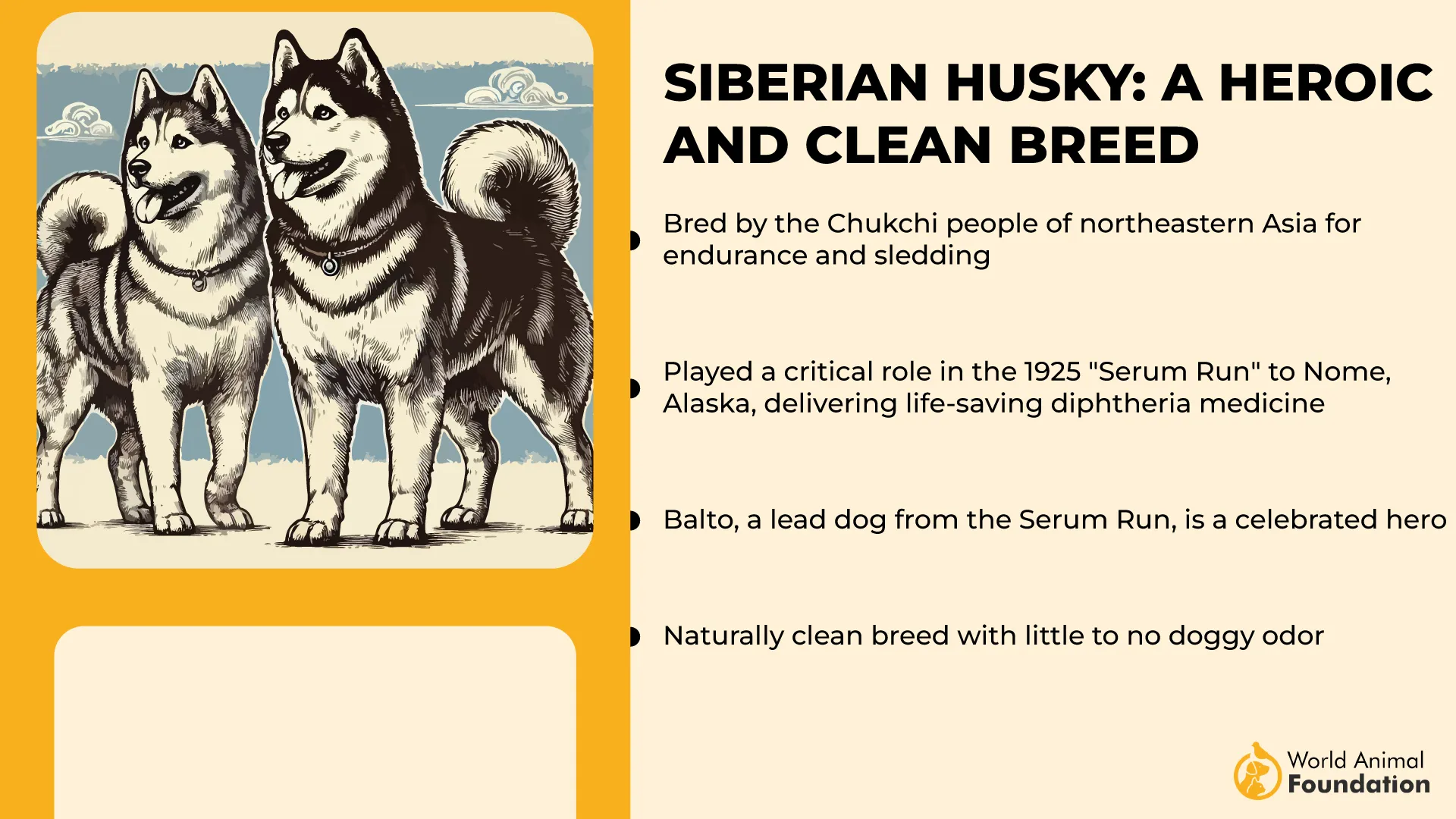
They have pointed ears and slender legs. Like many dogs, huskies are playful and create a really strong bond with children. Siberian Huskies are renowned for their energetic and affectionate nature, which makes them part of the family.
6. Kugsha
Kugsha dogs have their origin in the United States; they are intelligent and independent pets. It belongs to the species of Spitz-type dogs. They have a high-spirited nature and were originally bred to be working dogs.
Kugshas are a hyperactive dog breed that tends to create a strong bond with the owner. They have a really good temper, being an exceptionally hardworking breed, and, at the same time, are sensitive. These pups are also very energetic and sometimes act very moody.
They require special attention with the significant amount of workout or training. That is why they need highly experienced owners. It is a less popular breed and can grow to 60 to 110 pounds and can attain a height of 20 to 27 inches.
7. Alaskan Malamute

According to PDSA, Alaskan Malamutes are known for their loyalty, bold nature, and deep affection toward their owners. They form strong bonds with their families and are admired for their impressive strength, stamina, and friendly demeanor.
Although often mistaken for Huskies, Malamutes are a distinct breed. They share some ancestry with breeds like the Siberian Husky, German Shepherd, and Canadian Eskimo Dog, but there are clear differences between them.
Both Malamutes and Huskies were bred to pull sleds, yet they differ significantly in size, build, and temperament. Malamutes are heavier and more powerful, typically weighing between 75 to 85 pounds and standing 23 to 25 inches tall.
Their roles and personalities also set them apart. While Huskies tend to be more energetic and mischievous, Malamutes are steady, strong, and more reserved, making them unique in both character and appearance.
Conclusion
Not only are these coyotes, like dogs are adorable, but they also serve as potent reminders of the wild, which we often use to forget about. But the other admires them from a safe distance. In our lives, they bring a wonderful combination of strength, independence, and absolute loyalty.
For someone who wants the solace of the untamed, silent woods and wide-open skies, these wild dogs, like a coyote, are truly a piece of home. In order to own these very special breeds, whether they are red wolves, grey wolves, or other canids, they need to open their hearts to the spirit of the wolf for an equally brave and soulful companion.


